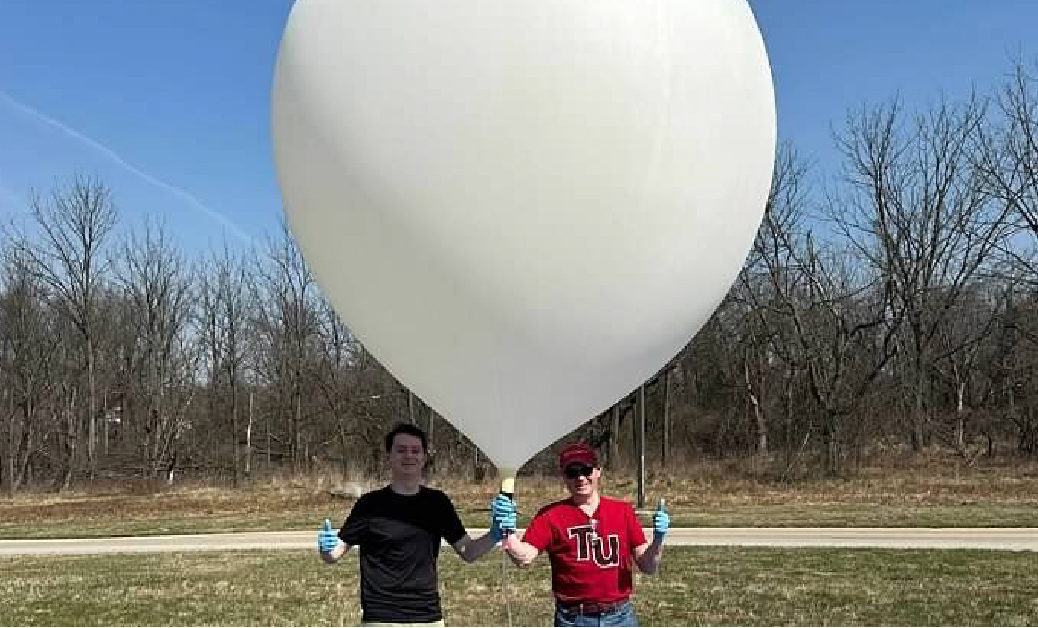On April 8th, 2024, a College of Engineering Senior Design Team will venture out to Erie, Pennsylvania to capture the solar eclipse on film and provide a live stream to those watching from home.
Team members Jonathan Isley, John Nori, Alexa Sano, Brandon Vaalburg, and Lloyd Yoo will be launching from a small field in Erie, PA while working with another engineering team from Gannon University who will be launching from the same site.
The Senior Design project is comprised of a high-altitude balloon, cameras and a GPS tracker (payloads), and an intricate grounding system. To keep the sun and eclipse within the camera's field of view, the payload contains a photodiode-based solar sensor and a custom quad-cell tracking algorithm. These two methods work in tandem to adjust the camera's orientation via an internal gearing system. The aim of the project is to launch the ballooning system into the air and capture the solar eclipse on film from a 360-degree viewpoint in the upper stratosphere.
The set-up, however, is no easy task. Besides the countless hours the team spent building and preparing, the day-of prep work is no exception. Over the course of a few hours, the team first needs to set up a grounding station a few hundred yards from the launch site, which will serve as the main control point for all the systems aboard the ballooning payloads. The grounding station will allow the team to communicate with the systems during flight. About an hour before launch, the team will fill the high-altitude balloon with helium and attach the payloads with paracord. Once launched, the balloon will ascend to heights of 100,000+ ft into the upper stratosphere while the team monitors its position from the ground. Chase and recovery will follow.
Team member Lloyd Yoo notes that “while viewing from the ground is an exciting experience, high-altitude ballooning allows us to see the eclipse from a much different perspective. For instance, our Insta360 camera will allow us to see the moon's "umbra" (shadow) traverse the Earth's surface as the eclipse happens.”
Additionally, those viewing from the ground may have their vision of the eclipse impaired by cloud coverage, precipitation, and light pollution. This project will provide a unique view of the eclipse that is impossible to experience from the ground.
“The team hopes to promote scientific curiosity and engage future engineers and scientists across the globe,” said Yoo.
You can live stream the 360-degree view the eclipse here beginning at 2:00pm EST. Streaming quality may vary due to the remote location.
https://youtube.com/live/Sgh8Tv7JFkM

